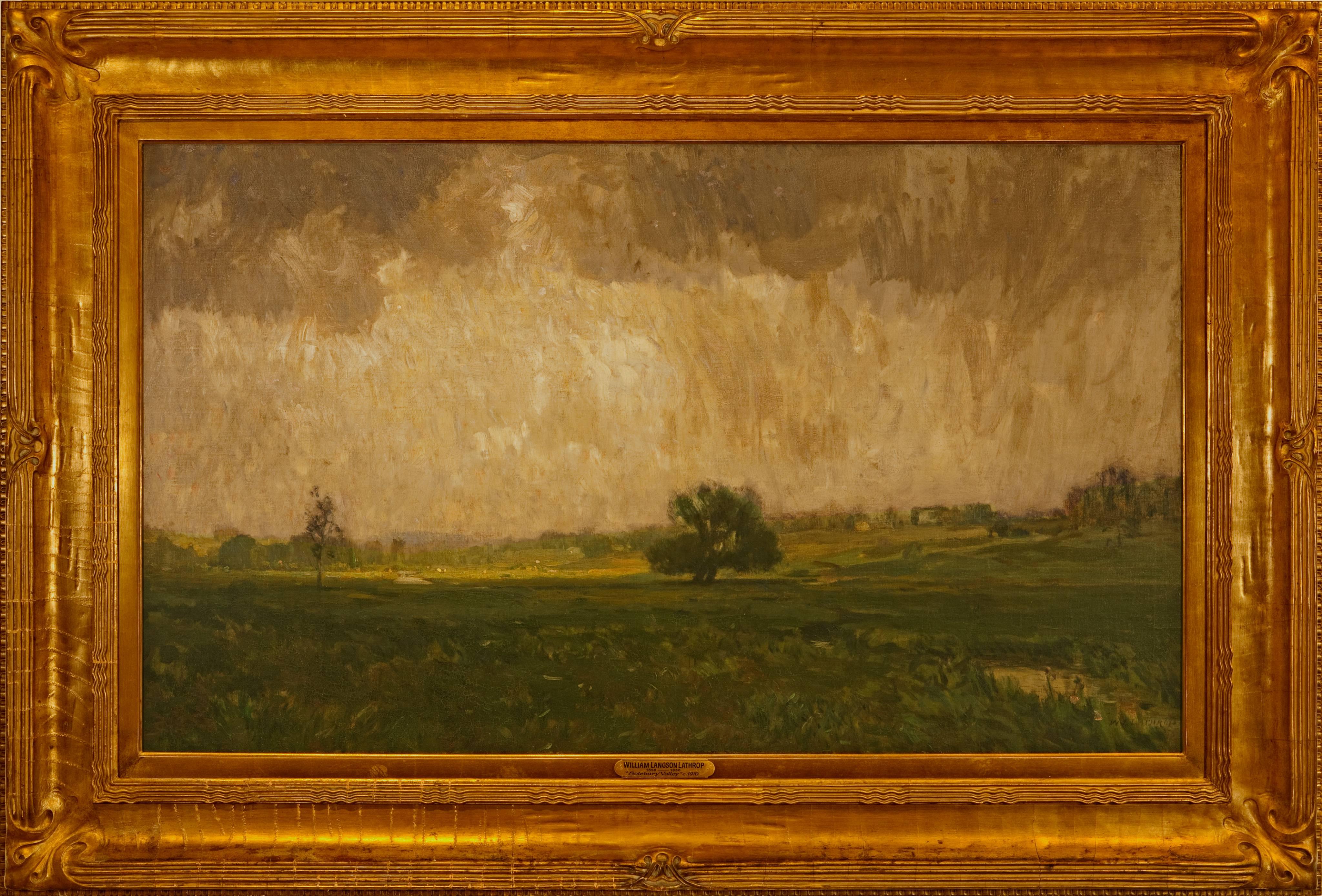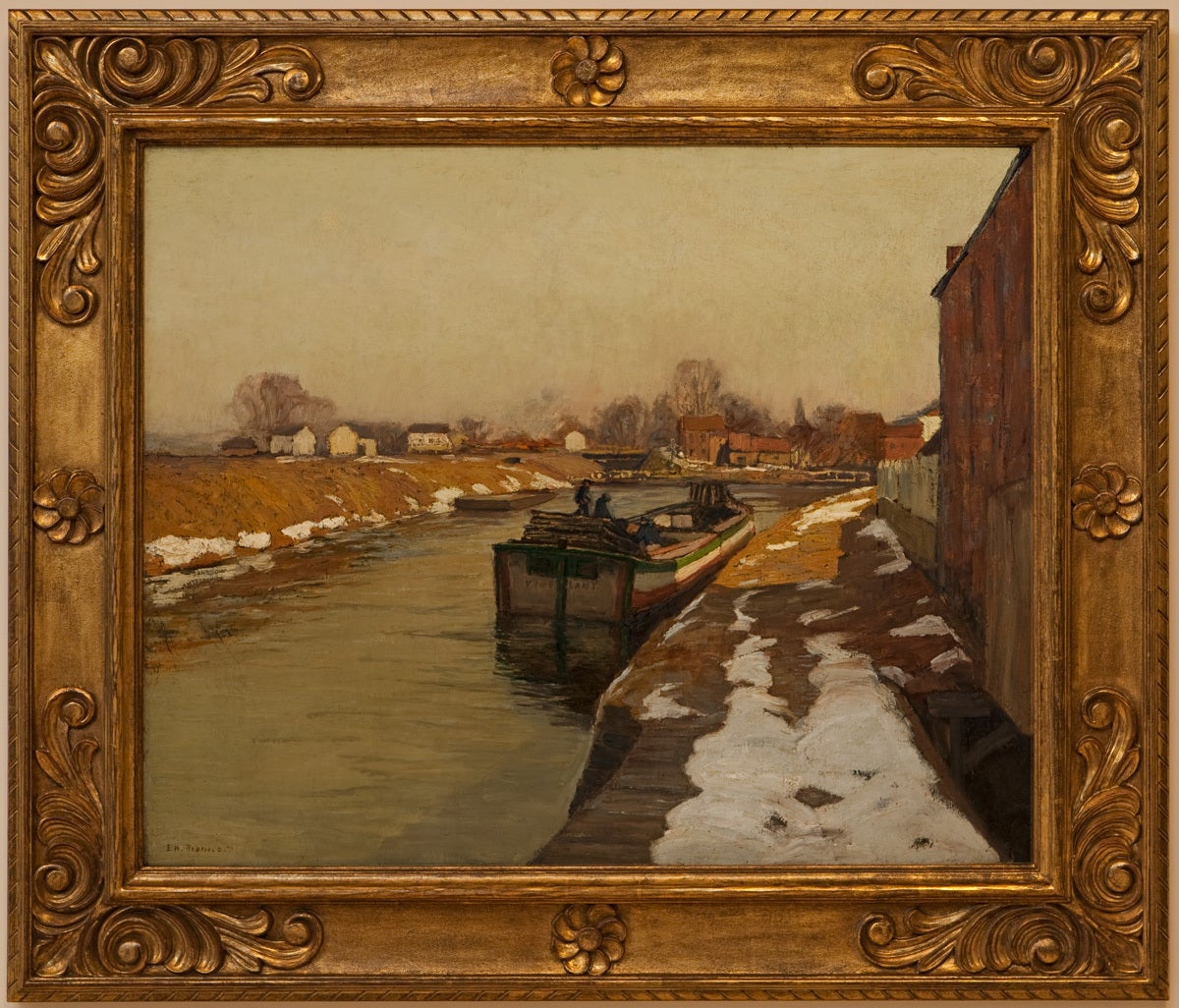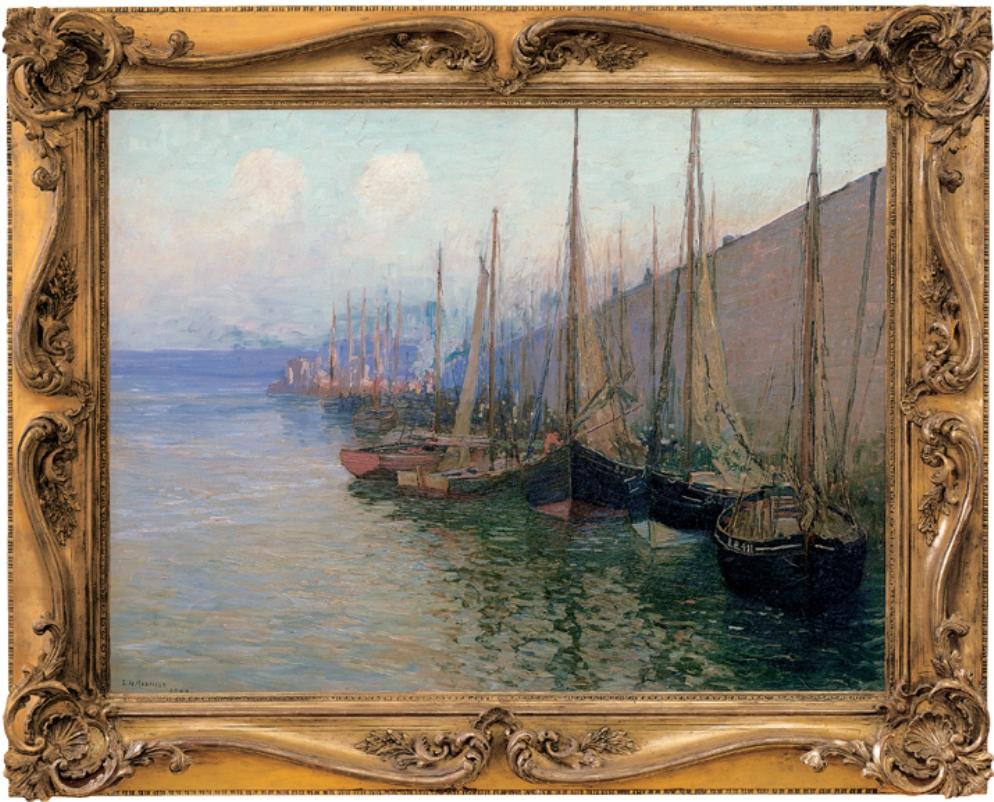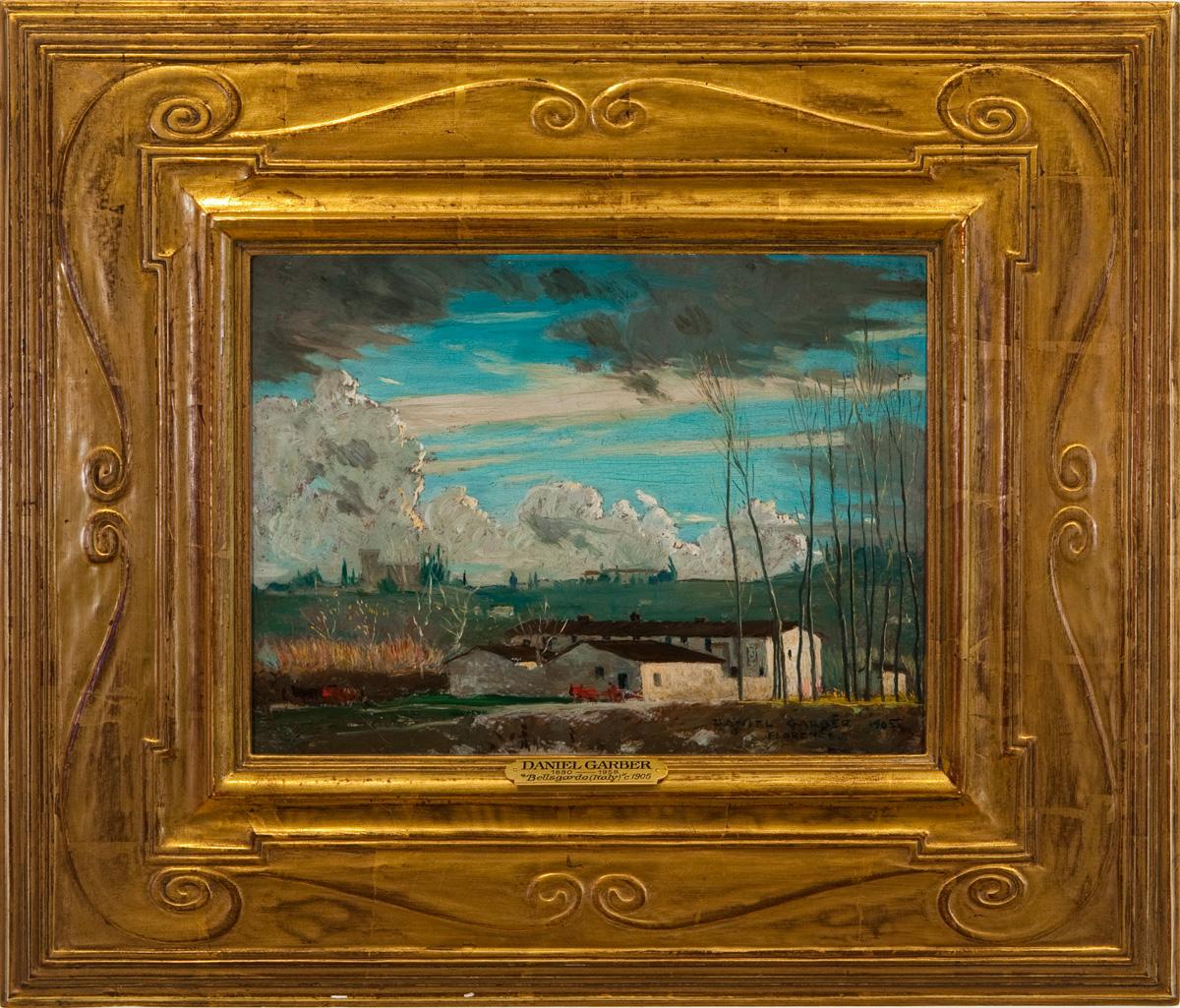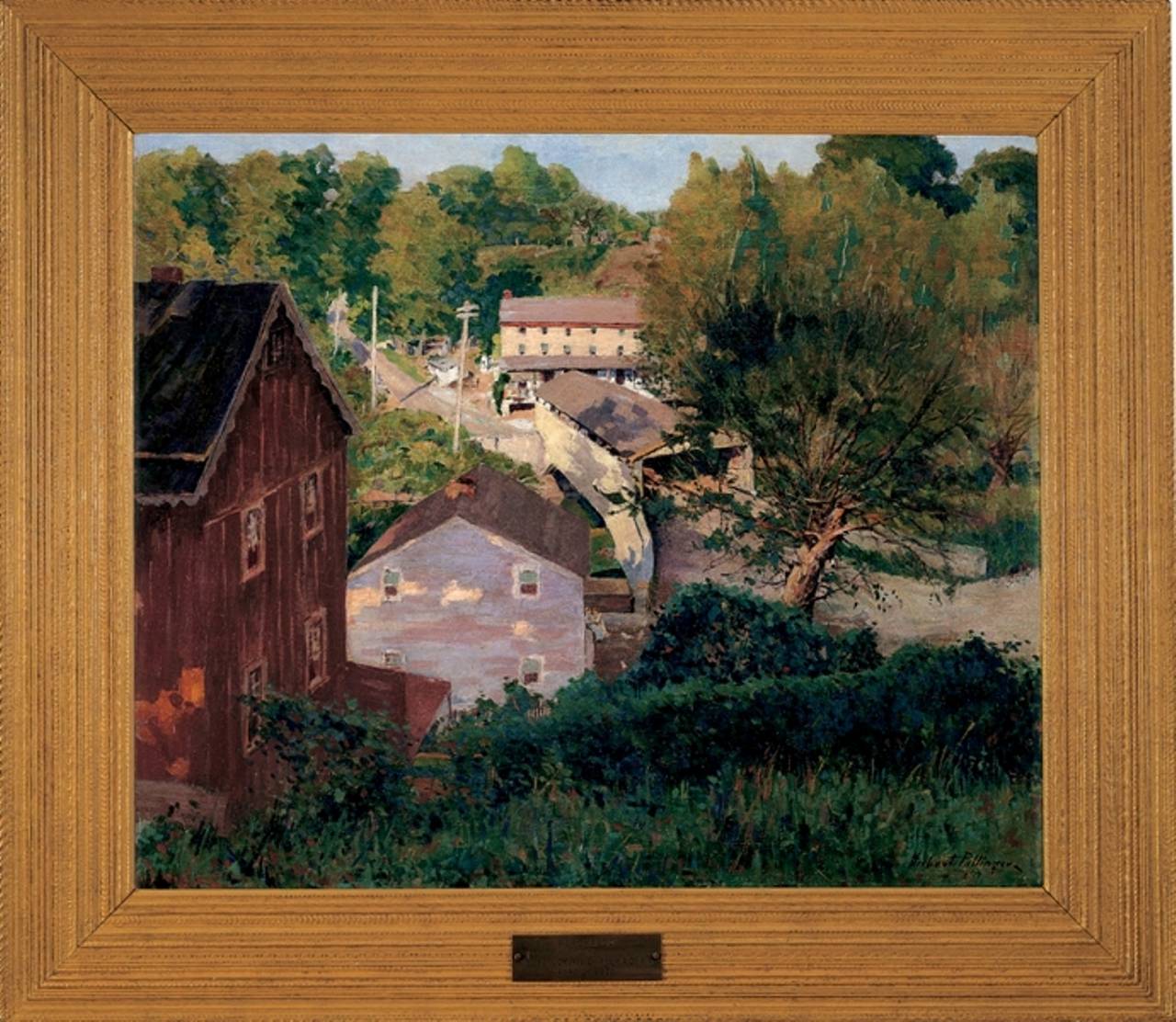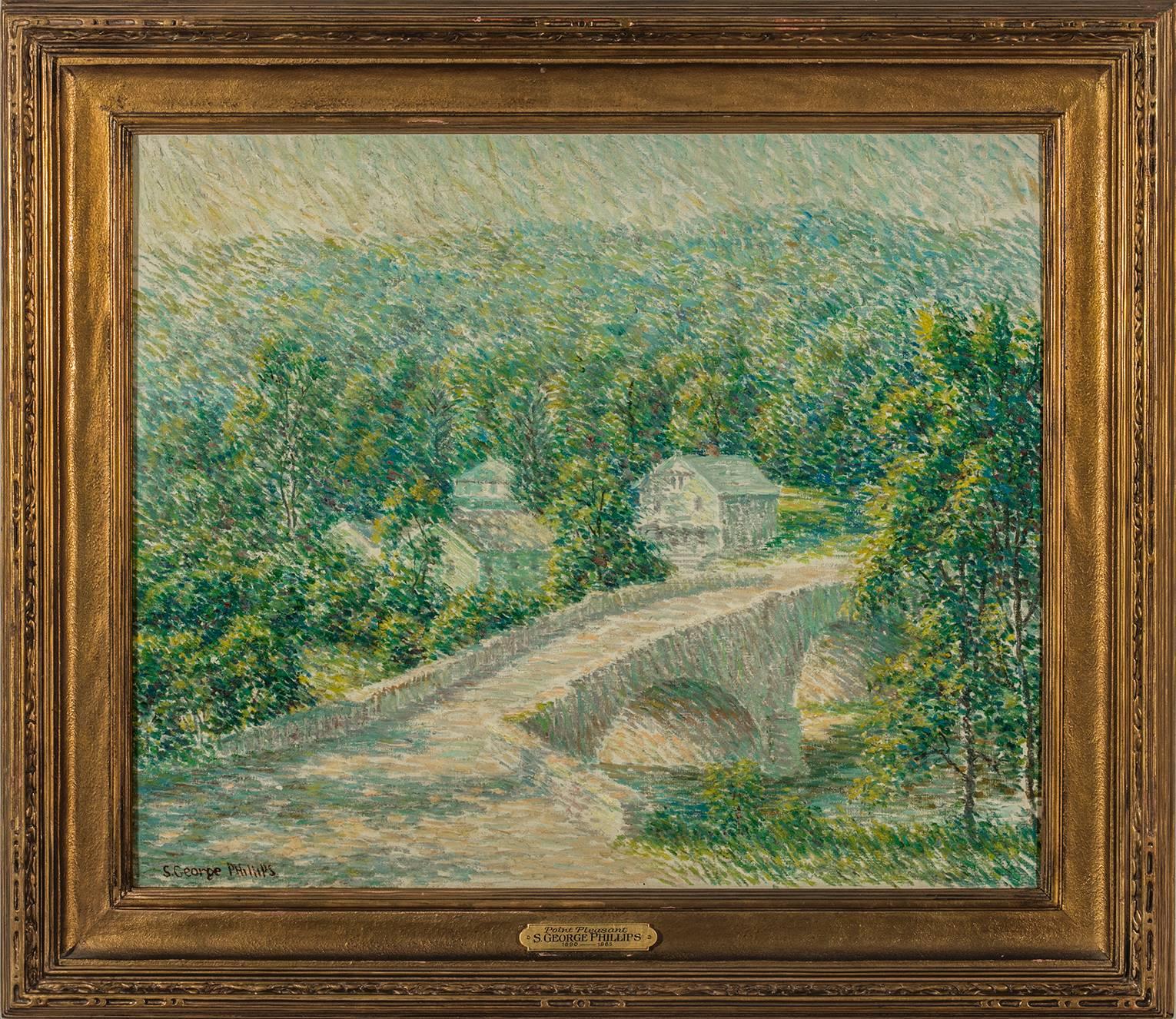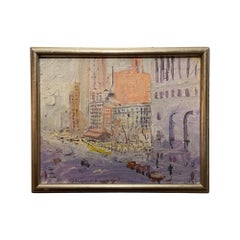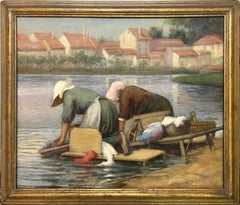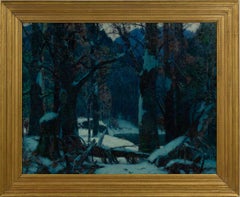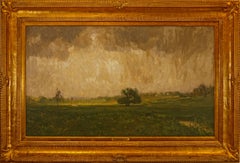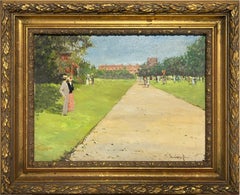
Impressionist Scene of Prospect Park, Brooklyn, New York.
View Similar Items
Want more images or videos?
Request additional images or videos from the seller
1 of 9
James HarringtonImpressionist Scene of Prospect Park, Brooklyn, New York.
About the Item
- Creator:James Harrington (1929 - 2016, American)
- Dimensions:Height: 12 in (30.48 cm)Width: 16 in (40.64 cm)
- More Editions & Sizes:12x16Price: $3,200
- Medium:
- Movement & Style:
- Period:
- Condition:
- Gallery Location:New York, NY
- Reference Number:1stDibs: LU1299213007022
About the Seller
4.4
Vetted Seller
These experienced sellers undergo a comprehensive evaluation by our team of in-house experts.
1stDibs seller since 2019
46 sales on 1stDibs
Typical response time: 7 hours
More From This SellerView All
- Impressionist Plein Aire painting New York City Street Scene Verdi SqaureBy Peter MayerLocated in New York, NYAmerican plein air impressionist Peter Mayer was born 1887-1993. Exhibited painting of Broadway and West 72nd street in New York, Verdi Square. T...Category
Late 20th Century American Impressionist Landscape Paintings
MaterialsOil, Masonite
- 19th Century American Impressionist Painting of French River SceneBy Hiram Reynolds BloomerLocated in New York, NYThe picture shows a painting of a picturesque countryside with a trail and a river in it. The image depicts a road leading to a river with trees in the backdrop. In the image's foreground, people can be seen strolling along a path. There are clouds adorning the sky above. A path that follows the river is depicted in another area of the image. There are boats floating on the river itself. Weeds that are close to the water are also included in the artwork. Hiram Reynolds Bloomer, an American artist known for his California landscapes, was born in New York in 1845. He moved to San Francisco in 1852 and studied under Virgil Williams...Category
19th Century American Impressionist Landscape Paintings
MaterialsOil
- Multi-Exhibition Labels FRENCH IMPRESSIONIST Washerwoman Banks of Loing RiverLocated in New York, NYHere I’m selling a very interesting work by an Important female American impressionist painter Lee Lufkin Kaula (1865-1957). Painting has Four Different EXHIBITION Labels: 1. Boston Art Club Exhibition 2. Pennsylvania Academy Fine Arts 1907 Exhibition 3. Poland Spring Gallery Exhibition 1908 4. The Arts Student League Of New York I Purchased this painting a few weeks ago as an unsigned impressionist...Category
Early 1900s American Impressionist Landscape Paintings
MaterialsGouache
- 1893 American Tonalist Impressionist Moonlit LandscapeBy Charles Morris YoungLocated in New York, NYEarly American Impressionist Moonlit landscape with river by Charles Morris Young (1869-1964). Oil on canvas, dated 1894. Signed lower right. Disp...Category
Late 19th Century Impressionist Landscape Paintings
MaterialsOil
- American Impressionist Boats Whaling Schooner New Bedford MassachusettsBy Harry NeylandLocated in New York, NYHarry Neyland was an American impressionist painter, born 1877-1958 in Massachusetts. This painting is an American impressionist seascape with great colors and painterly texture. Inscribed on back: "The boat was a whaler sailing off of New Bedford...Category
Early 20th Century Impressionist Landscape Paintings
MaterialsOil
- Italian Luminist Impressionist Venetian Grand Canal and Gondola Bridge SceneLocated in New York, NYBernard Hay Italian, 1864-1931 Oil on canvas 10 3/4 x 16 1/2 inches 18 3/4 x 13 inches overall Italian Venetian impressionist scene, with gondolas pass...Category
Late 19th Century Impressionist Landscape Paintings
MaterialsOil, Canvas
You May Also LikeView All
- "Alley Fiends"By John R. GrabachLocated in Lambertville, NJJim’s of Lambertville is proud to offer this artwork by: John R. Grabach (1886 - 1981) John Grabach was a highly regarded New Jersey artist, teacher, and author of the classic text...Category
1930s American Impressionist Landscape Paintings
MaterialsCanvas, Oil
- "Forest Strongholds"By John F. CarlsonLocated in Lambertville, NJSigned lower right. Complemented by a hand carved and gilt frame. Exhibited at the National Academy of Design, 1928Category
20th Century American Impressionist Landscape Paintings
MaterialsCanvas, Oil
- "Solebury Valley"By William Langson LathropLocated in Lambertville, NJSigned lower right. Complemented by a period frame. William L. Lathrop (1859-1938) Deemed “Father of the New Hope Art Colony”, William Langson Lathrop was born in Warren, Illinois. He was largely self-taught, having only studied briefly with William Merritt Chase in 1887, at the Art Students League. Lathrop first moved east in the early 1880s, and took a job at the Photoengraving Company in New York City. While there, he befriended a fellow employee, Henry B. Snell. The two men became lifelong friends and ultimately, both would be considered central figures among the New Hope Art Colony. Lathrop's early years as an artist were ones of continuing struggle. His efforts to break through in the New York art scene seemed futile, so he scraped enough money together to travel to Europe with Henry Snell in1888. There he met and married an English girl, Annie Burt. Upon returning to New York, he tried his hand at etching, making tools from old saw blades...Category
1910s American Impressionist Landscape Paintings
MaterialsCanvas, Oil
- Winter MoonlightBy George William SotterLocated in Lambertville, NJsigned lower rightCategory
1910s American Impressionist Landscape Paintings
MaterialsCanvas, Oil
- "The Canal"By Edward Willis RedfieldLocated in Lambertville, NJJim’s of Lambertville is proud to offer this artwork. Signed lower left. Complemented by a hand carved and gilt frame. Illustrated in "Edward Redfield: Just Values and Fine Seeing" by Constance Kimmerle and the Pennsylvania Academy of the Fine Arts's Exhibition of Paintings by Edward Redfield (April 17 to May 16, 1909) brochure Edward Willis Redfield (1869 - 1965) Edward W. Redfield was born in Bridgeville, Delaware, moving to Philadelphia as a young child. Determined to be an artist from an early age, he studied at the Spring Garden Institute and the Franklin Institute before entering the Pennsylvania Academy from 1887 to 1889, where he studied under Thomas Anshutz, James Kelly, and Thomas Hovenden. Along with his friend and fellow artist, Robert Henri, he traveled abroad in 1889 and studied at the Academie Julian in Paris under William Bouguereau and Tony Robert-Fleury. While in France, Redfield met Elise Deligant, the daughter of an innkeeper, and married in London in 1893. Upon his return to the United States, Redfield and his wife settled in Glenside, Pennsylvania. He remained there until 1898, at which time he moved his family to Center Bridge, a town several miles north of New Hope along the Delaware River. Redfield painted prolifically in the 1890s but it was not until the beginning of the twentieth century that he would develop the bold impressionist style that defined his career. As Redfield’s international reputation spread, many young artists gravitated to New Hope as he was a great inspiration and an iconic role model. Edward Redfield remained in Center Bridge throughout his long life, fathering his six children there. Around 1905 and 1906, Redfield’s style was coming into its own, employing thick vigorous brush strokes tightly woven and layered with a multitude of colors. These large plein-air canvases define the essence of Pennsylvania Impressionism. By 1907, Redfield had perfected his craft and, from this point forward, was creating some of his finest work. Redfield would once again return to France where he painted a small but important body of work between 1907 and 1908. While there, he received an Honorable Mention from the Paris Salon for one of these canvases. In 1910 he was awarded a Gold Medal at the prestigious Buenos Aires Exposition and at the Panama-Pacific Exposition of 1915 in San Francisco, an entire gallery was dedicated for twenty-one of his paintings. Since Redfield painted for Exhibition with the intent to win medals, his best effort often went into his larger paintings. Although he also painted many fine smaller pictures, virtually all of his works were of major award-winning canvas sizes of 38x50 or 50x56 inches. If one were to assign a period of Redfield’s work that was representative of his “best period”, it would have to be from 1907 to 1925. Although he was capable of creating masterpieces though the late 1940s, his style fully matured by 1907 and most work from then through the early twenties was of consistently high quality. In the later 1920s and through the 1930s and 1940s, he was like most other great artists, creating some paintings that were superb examples and others that were of more ordinary quality. Redfield earned an international reputation at a young age, known for accurately recording nature with his canvases and painting virtually all of his work outdoors; Redfield was one of a rare breed. He was regarded as the pioneer of impressionist winter landscape painting in America, having few if any equals. Redfield spent summers in Maine, first at Boothbay Harbor and beginning in the 1920s, on Monhegan Island. There he painted colorful marine and coastal scenes as well as the island’s landscape and fishing shacks. He remained active painting and making Windsor style furniture...Category
Early 1900s American Impressionist Landscape Paintings
MaterialsCanvas, Oil
- "In Port"By Edward Willis RedfieldLocated in Lambertville, NJJim’s of Lambertville is proud to offer this artwork by: Edward Willis Redfield (1869 - 1965) Edward W. Redfield was born in Bridgeville, Delaware, moving to Philadelphia as a young child. Determined to be an artist from an early age, he studied at the Spring Garden Institute and the Franklin Institute before entering the Pennsylvania Academy from 1887 to 1889, where he studied under Thomas Anshutz, James Kelly, and Thomas Hovenden. Along with his friend and fellow artist, Robert Henri, he traveled abroad in 1889 and studied at the Academie Julian in Paris under William Bouguereau and Tony Robert-Fleury. While in France, Redfield met Elise Deligant, the daughter of an innkeeper, and married in London in 1893. Upon his return to the United States, Redfield and his wife settled in Glenside, Pennsylvania. He remained there until 1898, at which time he moved his family to Center Bridge, a town several miles north of New Hope along the Delaware River. Redfield painted prolifically in the 1890s but it was not until the beginning of the twentieth century that he would develop the bold impressionist style that defined his career. As Redfield’s international reputation spread, many young artists gravitated to New Hope as he was a great inspiration and an iconic role model. Edward Redfield remained in Center Bridge throughout his long life, fathering his six children there. Around 1905 and 1906, Redfield’s style was coming into its own, employing thick vigorous brush strokes tightly woven and layered with a multitude of colors. These large plein-air canvases define the essence of Pennsylvania Impressionism. By 1907, Redfield had perfected his craft and, from this point forward, was creating some of his finest work. Redfield would once again return to France where he painted a small but important body of work between 1907 and 1908. While there, he received an Honorable Mention from the Paris Salon for one of these canvases. In 1910 he was awarded a Gold Medal at the prestigious Buenos Aires Exposition and at the Panama-Pacific Exposition of 1915 in San Francisco, an entire gallery was dedicated for twenty-one of his paintings. Since Redfield painted for Exhibition with the intent to win medals, his best effort often went into his larger paintings. Although he also painted many fine smaller pictures, virtually all of his works were of major award-winning canvas sizes of 38x50 or 50x56 inches. If one were to assign a period of Redfield’s work that was representative of his “best period”, it would have to be from 1907 to 1925. Although he was capable of creating masterpieces though the late 1940s, his style fully matured by 1907 and most work from then through the early twenties was of consistently high quality. In the later 1920s and through the 1930s and 1940s, he was like most other great artists, creating some paintings that were superb examples and others that were of more ordinary quality. Redfield earned an international reputation at a young age, known for accurately recording nature with his canvases and painting virtually all of his work outdoors; Redfield was one of a rare breed. He was regarded as the pioneer of impressionist winter landscape painting in America, having few if any equals. Redfield spent summers in Maine, first at Boothbay Harbor and beginning in the 1920s, on Monhegan Island. There he painted colorful marine and coastal scenes as well as the island’s landscape and fishing shacks. He remained active painting and making Windsor style furniture...Category
Early 1900s American Impressionist Landscape Paintings
MaterialsCanvas, Oil
Recently Viewed
View AllMore Ways To Browse
James Harrington
Irish Landscape
French Romantic Painting
Metal Tree Art
Victorian Oil Painting With Frame
Antique Paintings Summer
Large British Oil Painting
Vintage Summer House
Plein Air France
R Waring
River Valley
1960s Landscape Oil Painting
Fantastic Landscape
Venezuelan Artist
Vintage Church Signs
19th Century English Oil Painting
Auction For Oil Paintings
Original Native American Paintings


